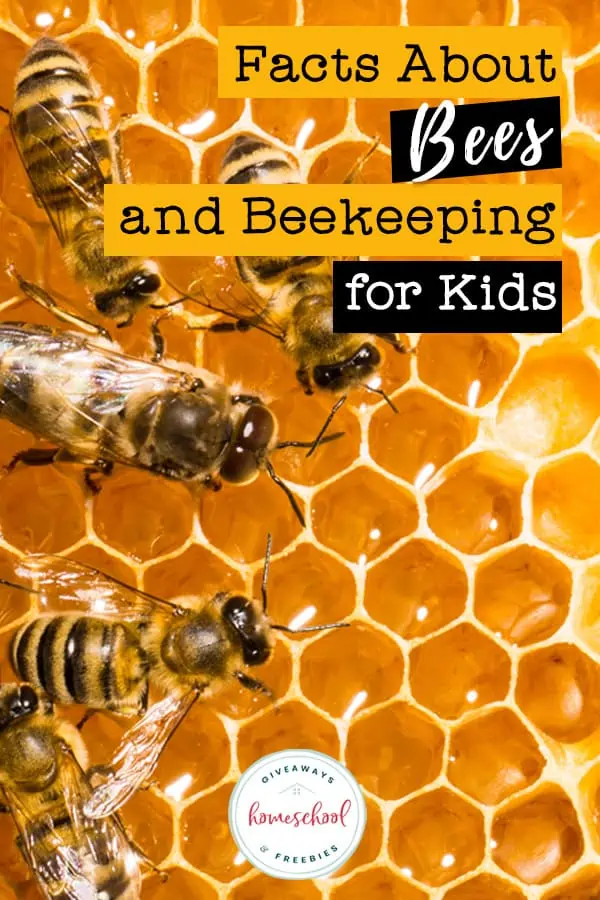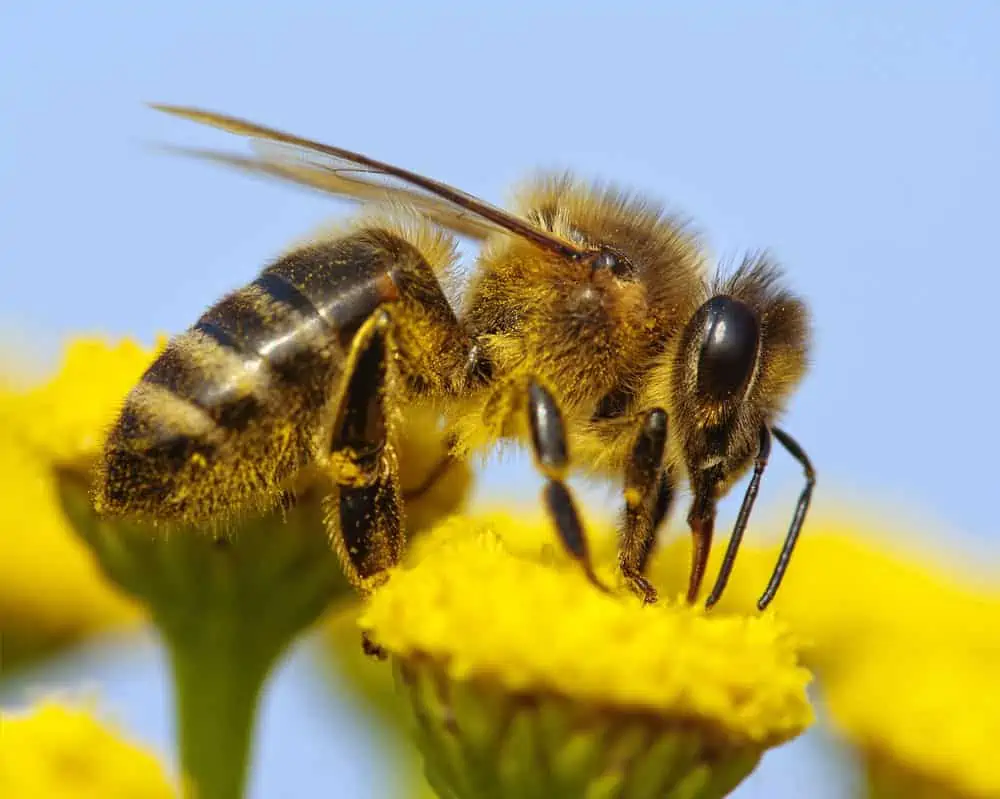Facts About Bees and Beekeeping for Kids
Published:
April 1, 2022

Contributor:
Alpha Omega Publications
Disclosure: This post may contain affiliate links, meaning if you decide to make a purchase via my links, I may earn a commission at no additional cost to you. See my disclosure for more info.
Are your kids interested in beekeeping? Learning facts about bees can be a fun way to move into the spring and summer months as these amazing insects start to get to work.
Facts About Bees
You can celebrate World Bee Day on May 20th by reading the stories of other families who have learned the art of beekeeping. You never know – maybe your kids will be next to learn the skill! To pique their interest even more, here are some interesting facts about bees.
What Are 10 Facts About Bees?
There’s a reason we use the phrase “busy bee” in describing a hard worker. The beehive is a place of constant work and activity every single day.
Bees beat their wings 200 times per second
The buzzing sound we associate with bees comes from how fast they beat their wings – up to 200 times per second! Bee anatomy can be a fun area to study in your homeschool. Help your kids sketch out a diagram of a bee and start to label the parts.
Parts of a Bee
The main parts of the honey bee are common to most other insects as well. These parts include:
- Exoskeleton
- Three main body parts: head, thorax, abdomen
- Antennae
- Three pairs of legs
- Two pairs of wings
In addition, their large compound eyes can be a fascinating area of study. Kids love studying insects!
There are three types of bees in each hive
The beehive has three main types of bees: male drones, a single queen bee, and worker females.
These bees all have different tasks to keep the hive thriving and alive. A beehive contains between 20,000-100,000 bees. Of these bees, there is only a single queen. About 15 percent of the colony is a male drone, and the rest are female worker bees.
Unfertilized eggs will develop into honeybee males. These male drones have only one job and that is to mate with the queen. The male drones don’t collect honey and they don’t even have a stinger. It is the worker bees who keep the beehive going.
Worker bees are all female
Worker bees are all female bees. In addition to collecting all the nectar, these worker bees also guard the hive and feed the babies. Bees are social insects that can communicate with each other about where to find the best flowers or if a bee that is coming to the hive is friend or foe.
Each hive has only one queen
Each hive has only one queen and she lays between 1000-2500 eggs every day.
The queen bee is vital to the colony, as she is the only female bee that is able to reproduce. The fertile queen bee lays 800,000 eggs over the course of her lifetime! The scent she produces also helps to keep the colony unified.
Royal Jelly
You may have heard of royal jelly? This is the milk-like secretion that is the nutrition of the developing larvae and the queen. Royal jelly has potential in treating human disease, so it will be very exciting to see developments on this front in the coming years.
Honeybees were brought to North America in the 1600s
Native Americans called bees “the white man’s fly” because they weren’t native to the continent. Early settlers brought European honeybees to North America in the early 1600s. But it took several hundred years for them to cover the continent. Believe it or not, they didn’t spread all the way to Alaska until 1927!
While there are over 20,000 different species of bees, only about 4000 of them are native to the United States.
One of the treasures in King Tut’s tomb was honey!
You might be surprised to know that ancient civilizations honored the importance of bees in their society and valued their honey. Interestingly enough, honey was even found in King Tut’s tomb! And since honey doesn’t spoil, it was still good, even after millenia. The ancient Egyptians were also known to pay their taxes with honey.
Ancient civilizations valued bees
Apollo was the first beekeeper, according to Greek mythology. And you can even find ancient Greek coins with bees on them. In the Hittite Empire, a swarm of bees was valued equal to that of a sheep, and you were fined if you were caught stealing someone’s bees.
The Magna Carta even granted the freedom to harvest wild honey to the citizenry.
Each colony has its own scent
Honey bees have 170 odorant receptors, which means they have an amazing sense of smell. Each colony has a specific scent which makes the bees able to tell which other bees belong to their hive.
10 pounds of pollen are needed to produce a single pound of honey
The average worker bee can commonly carry up to 80% of their own body weight in pollen. And bees need to collect a lot of pollen because it takes 10 pounds of pollen to produce a single pound of honey. A honeybee will visit 50-100 flowers in a single collection trip.
Americans consume 1.51 pounds of honey every year
The U.S. boasts about 212,000 beekeepers who produce 300 different kinds of honey. The different flavors and colors of honey are determined by the flowers the bees visit and collect nectar.
But did you know that the average American consumes about 1.51 pounds of honey each year! Honeybees are the only insect that produces food eaten by humans.
Why Bees are Important
There is more to bees than just their honey. Their work is crucial to the whole food chain.
Bees are the top pollinator. Eighty percent of the crops in the U.S. that need pollination can thank honeybees for doing the job. And a whopping 30 percent of the food we eat is reliant on honey bee pollination.
A whole hive of bees flies 55,000 miles to produce a single pound of honey. And over the course of a year, a single hive will produce 60-100 pounds of honey. But only 1/12 teaspoon of honey is produced by the average bee over the course of its entire lifetime.
Because of the vital role that these pollinators play in the food chain, it’s important to nurture bee-friendly plants in your yard. These native plants in North America would include:
- Honeysuckle
- Sunflower
- Cosmos
- Coneflower
- Strawberries
- Dahlia
- Butterfly bush
- Crocus
Learn how to build a pollinator habitat with your kids for some educational summer fun. Grab some free bee printables and have fun learning all about bees in your homeschool.










